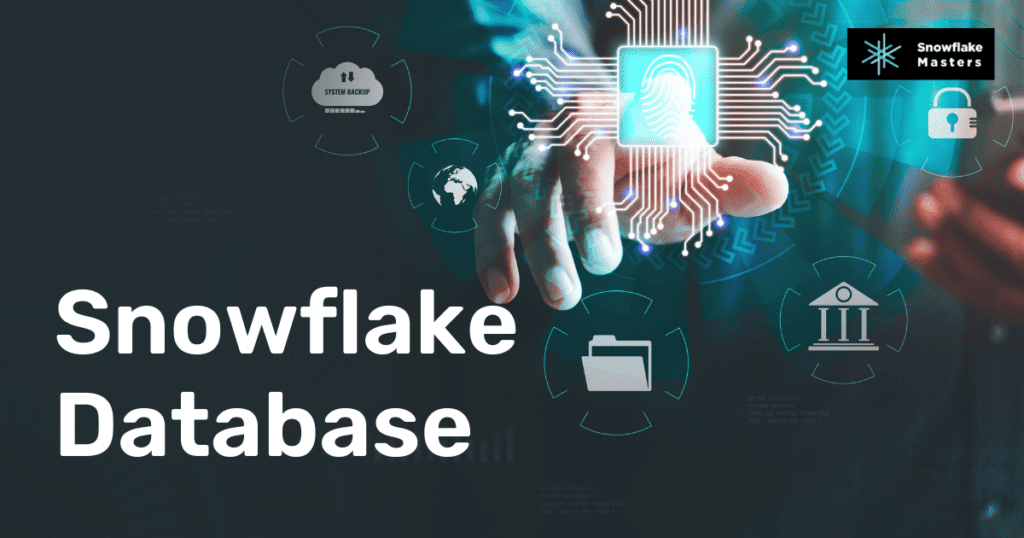Why Snowflake Clone Database is the Key to Scalable Analytics
Snowflake Clone Database

Snowflake clone databases are a powerful feature that enables scalable analytics in Snowflake. With clone databases, users can create fully functional copies of databases without duplicating the data, allowing them to experiment with different queries and data models without affecting the original data.
Clone databases also enable data sharing and collaboration, making it easier for teams to work with the same data without duplicating or synchronizing it. Clone databases provide users a flexible and efficient way to work with large datasets, enabling organizations to derive more insights from their data and make more informed business decisions.
Table of contents
- What is Snowflake Clone Database?
- Why Snowflake clone Database ?
- What is the Snowflake database?
- How do clone databases work in Snowflake?
- The Snowflake clone database copy grants
- Snowflake clone database permissions
- Benefits of Snowflake Clone Database
- Diverse Perspectives on Snowflake Clone Database
- Conclusion
What is Snowflake Clone Database?
It is a powerful feature of the cloud-based data warehousing platform, Snowflake. A cloned database is a replica of a master database that can be used for various purposes, such as testing, development, or reporting.
Clone databases are created by making an exact copy of a master database, including all data, schema, and metadata. Changes made to the clone database do not affect the master database, allowing users to experiment with data and test queries without risking the integrity of the original data.
One of the key benefits of it is its scalability. As businesses generate more data, they need to be able to scale their data warehousing solutions to keep up with the demand. With clone databases, businesses can create multiple copies of a master database to handle increased workloads.
That allows businesses to scale their analytics solutions without investing in additional hardware or infrastructure. It is a powerful tool that can help businesses achieve scalable analytics solutions. They are cost-effective, improve performance, and provide a secure way to experiment with data without risking the integrity of the original data.
What is Snowflake Clone Database?
It is a powerful feature of the cloud-based data warehousing platform, Snowflake. A cloned database is a replica of a master database that can be used for various purposes, such as testing, development, or reporting.
Clone databases are created by making an exact copy of a master database, including all data, schema, and metadata. Changes made to the clone database do not affect the master database, allowing users to experiment with data and test queries without risking the integrity of the original data.
One of the key benefits of it is its scalability. As businesses generate more data, they need to be able to scale their data warehousing solutions to keep up with the demand. With clone databases, businesses can create multiple copies of a master database to handle increased workloads.
That allows businesses to scale their analytics solutions without investing in additional hardware or infrastructure. It is a powerful tool that can help businesses achieve scalable analytics solutions. They are cost-effective, improve performance, and provide a secure way to experiment with data without risking the integrity of the original data.
Why Snowflake clone Database
Snowflake’s clone database feature allows businesses to create a complete copy of an entire database quickly and without additional storage costs. This is incredibly useful for tasks such as testing, development, and backup. Developers can use a clone of the production database to test new features or changes without risking the integrity of the original data. This ensures that any issues can be identified and resolved in a safe environment before being applied to the live database.
Another advantage of cloning a database in Snowflake is the ability to perform analytical tasks or run experiments without impacting the performance of the production system. Teams can analyze data, generate reports, or test hypotheses on the cloned database, ensuring that the main operational database remains fast and responsive. This separation of environments helps maintain high performance and reliability for users while still enabling comprehensive data analysis and innovation.
What is the Snowflake database?
Snowflake is a cloud-based data warehousing platform that offers enterprises a flexible and scalable option for storing and analyzing enormous volumes of data. It is intended to be quick, secure, and simple to use.
Snowflake is developed on the Amazon Web Services (AWS) and Microsoft Azure cloud platforms, allowing businesses to leverage the power and scalability of these cloud platforms. It uses a unique architecture separating storage and computing, allowing businesses to scale their data warehousing solutions as needed without investing in additional hardware or infrastructure.
One of the critical benefits of Snowflake is its ability to handle diverse data types, including structured, semi-structured, and unstructured data. That makes it an ideal solution for businesses that analyze data from various sources, such as social media, IoT devices, and other sources.
Snowflake also provides a range of security features, including multi-factor authentication, encryption, and access controls. That ensures businesses can store and analyze their data securely without risking data breaches or other security issues.
Snowflake is a flexible and secure data warehousing technology that can assist enterprises in swiftly and securely storing and analyzing enormous volumes of data. It is cloud-based design and distinct features make it a perfect alternative for enterprises that require the ability to grow their analytics solutions as needed.

How do clone databases work in Snowflake?
Clone Snowflake databases work by creating a replica of a master database. When a clone database is created, it includes all the data, schema, and metadata from the master database. Changes made to the clone database do not affect the master database, allowing users to experiment with data and test queries without risking the integrity of the original data.
Clone databases are created using Snowflake’s web interface or SQL commands. Once a clone database has been created, users can use it for various purposes, such as testing, development, or reporting. The clone database can be used just like the master database, and changes made to the clone database are isolated from the master database.
One of the critical benefits of clone databases in Snowflake is their scalability. As businesses generate more data, they need to be able to scale their data warehousing solutions to keep up with the demand. With clone databases, businesses can create multiple copies of a master database to handle increased workloads. That allows businesses to scale their analytics solutions without investing in additional hardware or infrastructure.
In summary, clone databases in Snowflake work by creating a replica of a master database, allowing users to experiment with data and test queries without risking the integrity of the original data. They are scalable and can be used for various purposes, making them a powerful tool for businesses of all sizes.
Sure, here are some critical points about clone databases in Snowflake:
- Clone databases are replicas of a master database, including all data, schema, and metadata.
- Changes made to a clone database do not affect the master database, allowing users to experiment with data and test queries without risking the integrity of the original data.
- Clone databases can be created using Snowflake’s web interface or SQL commands.
- Clone databases can be used for various purposes, such as testing, development, or reporting.
- Clone databases are scalable, allowing businesses to create multiple copies of a master database to handle increased workloads.
- Clone databases can improve performance by isolating workloads and reducing contention for resources.
- Clone databases are cost-effective, allowing businesses to scale their analytics solutions without investing in additional hardware or infrastructure.
- Clone databases provide a secure way to experiment with data without risking the integrity of the original data.
- Clone databases are a valuable resource for enterprises, offering a versatile and scalable alternative for capturing and analyzing immense amounts of data.
The Snowflake clone database copy grants
Sure, here are the critical points about Snowflake clone database copy grants:
- Clone database copy grants allow users to grant or revoke the ability to create clone databases for other users or roles.
- Users must have the CREATE CLONE DATABASE privilege to use clone database copy grants.
- Clone database copy grants can be granted at the account, schema, or database levels.
- Clone database copy grants provide additional security and control over clone databases in Snowflake.
- Clone database copy grants can be used to limit the size of clone databases to prevent excessive use of resources.
- The syntax for granting clone database copy grants is as follows:
GRANT CREATE CLONE DATABASE ON ACCOUNT TO <user_or_role>;GRANT CREATE CLONE DATABASE ON SCHEMA <schema_name> TO <user_or_role>;GRANT CREATE CLONE DATABASE ON DATABASE <database_name> TO <user_or_role>;
- The syntax for revoking clone database copy grants is as follows:
REVOKE CREATE CLONE DATABASE ON ACCOUNT FROM <user_or_role>;REVOKE CREATE CLONE DATABASE ON SCHEMA <schema_name> FROM <user_or_role>;REVOKE CREATE CLONE DATABASE ON DATABASE <database_name> FROM <user_or_role>;
Overall, Snowflake clone database copy grants provide businesses with a flexible and secure way to control who has access to clone databases and where they can create them.
Snowflake clone database permissions
Sure, here are the critical points about Snowflake clone database permissions:
- Clone database permissions allow users to control access to clone databases in Snowflake.
- Permissions can be granted at the account, schema, or database level.
- Permissions can also be granted for specific actions, such as SELECT, INSERT, UPDATE, and DELETE.
- Clone database permissions can be used to limit access to sensitive data.
- Clone database permissions can also be used to control resource usage.
- The syntax for granting clone database permissions is as follows:
- GRANT <privilege> ON CLONE DATABASE <clone_database_name> TO <user_or_role>;
- The syntax for revoking clone database permissions is as follows:
- REVOKE <privilege> ON CLONE DATABASE <clone_database_name> FROM <user_or_role>;
- The available privileges for clone databases include SELECT, INSERT, UPDATE, DELETE, REFERENCES, and EXECUTE.
- Clone database permissions provide businesses a flexible and secure way to control access to clone databases in Snowflake.
- By granting or revoking permissions to specific users or roles, businesses can ensure that their data is secure
Benefits of Snowflake Clone Database
Scalability: One of the main benefits is their scalability. As businesses generate more data, they need to be able to scale their data warehousing solutions to keep up with the demand. With clone databases, businesses can create multiple copies of a master database to handle increased workloads. That allows businesses to scale their analytics solutions without investing in additional hardware or infrastructure.
Cost Effectiveness: Another benefit is their cost-effectiveness. Traditional data warehousing solutions require businesses to invest in expensive hardware and infrastructure to handle large amounts of data. With Snowflake, businesses can store and analyze large amounts of data in the cloud, reducing the need for expensive hardware. Clone databases also allow businesses to create multiple copies of a master database without incurring additional costs.
Improved Performance: It can also improve the performance of analytics solutions. By creating multiple copies of a master database, businesses can isolate workloads and reduce resource contention. That can lead to faster query performance and improved overall analytics performance.

Diverse Perspectives on Snowflake Clone Database
According to a recent survey by Gartner, Snowflake is the fastest-growing data warehousing platform in the world. The survey found that Snowflake had a market share of 13.1% in 2020, up from 5.1% in 2019. This growth is a testament to the effectiveness of Snowflake’s data warehousing solutions, including clone databases.
However, some experts have raised concerns about the security of cloud-based data warehousing solutions like Snowflake. In a recent article in Forbes, security expert Davey Winder warned that cloud-based data warehousing solutions could be vulnerable to cyberattacks. Winder recommended that businesses secure their data by implementing multi-factor authentication and encryption.
While it has gained popularity as a powerful tool for scalable analytics solutions, diverse perspectives exist on its effectiveness and security.
On the one hand, Snowflake has been recognized as the fastest-growing data warehousing platform in the world, with clone databases being a key feature. The growth of Snowflake and its clone database functionality suggests that businesses are finding value in these solutions.
On the other hand, some experts have raised concerns about the security of cloud-based data warehousing solutions like Snowflake. In particular, there have been concerns about the vulnerability of cloud-based data warehousing solutions to cyberattacks. Security experts recommend that businesses secure their data by implementing multi-factor authentication and encryption.
Despite these concerns, Snowflake has continued to grow in popularity, with many businesses finding value in its clone database functionality. As with any technological solution, organizations must carefully examine their needs for safety while setting up appropriate security measures to secure their data.
Conclusion
It is a powerful tool that can help businesses achieve scalable analytics solutions. By creating multiple copies of a master database, businesses can scale their analytics solutions without investing in additional hardware or infrastructure. Clone databases are also cost-effective and can improve the performance of analytics solutions.
While some experts have raised concerns about the security of cloud-based data warehousing solutions, the growth of Snowflake and its clone database functionality suggests that businesses are finding value in these solutions.
FAQ’s
It is a replica of a master database that can be used for testing, development, or reporting purposes.
Clone databases are created by making an exact copy of a master database. Changes made to the clone database do not affect the master database.
Benefits of using it include scalability, cost-effectiveness, and improved performance.
Yes, you can create multiple clone databases from a single master database.
You can manage multiple clone databases using Snowflake’s web interface or SQL commands.
No, clone databases are not intended for use as data backups. Snowflake provides other solutions for data backups.
The cost of using it depends on the size of the master database and the number of clones created.
Snowflake provides security features such as multi-factor authentication and encryption to help secure clone databases.
No, it is a feature specific to the Snowflake data warehousing platform.
To get started, you can sign up for a Snowflake account and follow the instructions provided in the documentation.
